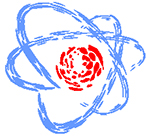Speaker
Mrs
Aneta Krakovska
(doctoral student)
Description
Bioindicators using for monitoring condition of air are organisms or their parts that contain information about quality of the environment. The main criteria for choosing bioindicator which are suitable for characterization of atmospheric aerosols are ability to respond to variation in concentrations of elements, natural occurrence in the study region, possibility of sampling in a season, tolerance to elevated levels of pollution and their assimilation must be independent of local conditions.
In this research were used mosses. They are tiny non-vascular plants that belong to the second most diverse group of terrestrial plants. They occur on all continents and grow on a wide range of substrates. A developed surface of their above ground parts is in good contact with the atmospheric air, and thus deposition and capture of aerosols is quite probable. Surface properties of moss cuticles facilitate penetration of metal ions into cells and onto the places in which they are bound. Since mosses have an underdeveloped root system, their contact with soil and, thus, intake of metal with substrates can be considered negligibly small.
It is sometimes forgotten that mosses are living organisms and not chemical adsorbents. It is therefore difficult to interpret the overall environmental significance of the elemental concentrations measured in mosses. Moreover, is not very known about the processes of uptake and release of contaminants in moss under natural conditions. Theories regarding the element burdens in mosses must therefore be proposed to help in the interpretation of the biological and environmental significance.
That is why the research have been expanded by another bioindicators such as Isopods and soil samples. As well as in the research have been used more moss species for individual sample sites. All samples have analysed by neutron activation analysis.
Despite above mention, the use of terrestrial mosses in metal biomonitoring enables spatial and temporal comparisons, including regional biogeochemical mapping and detection of important element sources.
Author
Mrs
Aneta Krakovska
(doctoral student)

